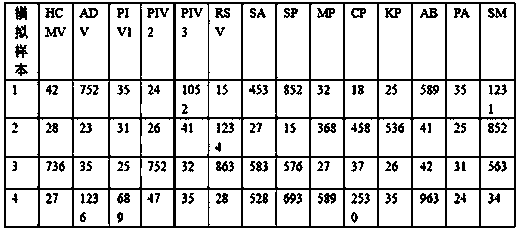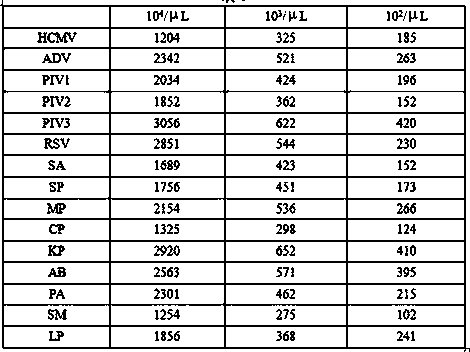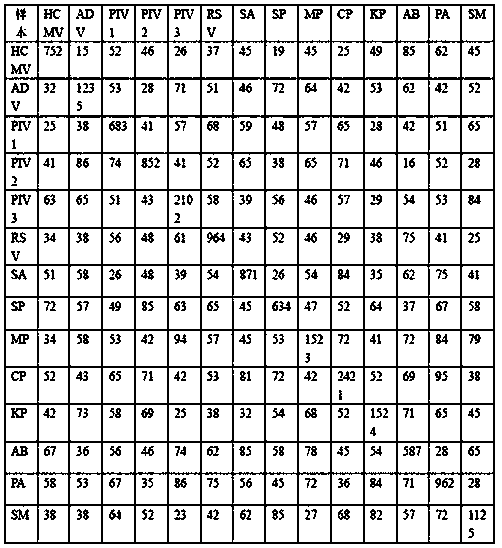Primer group for multiple RPA detection of respiratory tract pathogens, detection reagent and kit
A technology for detecting reagents and respiratory tract, which is applied in the field of molecular biology and can solve the problems of amplification annealing temperature, cooling rate and difficulty, etc.
- Summary
- Abstract
- Description
- Claims
- Application Information
AI Technical Summary
Problems solved by technology
Method used
Image
Examples
Embodiment approach
[0074] The experimental methods used in the following examples and comparative examples are conventional methods unless otherwise specified.
[0075] The materials and reagents used in the following examples and comparative examples can be obtained from commercial sources unless otherwise specified.
Embodiment
[0077] (1) A primer group for multiple RPA detection of respiratory pathogens, the primer group consists of 15 pairs of primers, and the construction process of the primers is as follows:
[0078] 1) The inventors used Clustal Omega and Vector NTI Suite 8.0 software to compare the DNA sequences of the known specific genes of pathogens (also known as "pathogens"), and screened out the specific sequences of acute respiratory infectious pathogens. The acid sequence looks like this:
[0079] ①Specific sequence of cytomegalovirus (HCMV for short):
[0080] AAGTTTTGTGCCCCAACGGTACGGGCTGCAGGTAAAGTGCGATCAAGAACGCGATAACGCCGATCACAAACAGCGTGACGATGACCTGCCATCGACGGTGATTATGGCCGGCTAGACCCGTGACGCAGCTGCAGAGGCTAAAAAGCACGC;
[0081] ② Specific sequence of adenovirus (ADV for short):
[0082] CGCAGTGGTCTTACATGCACATCTCGGGCCAGGACGCCTCGGAGTACCTGAGCCCCGGGCTGGTGCAGTTCG
[0083] CCCGCGCCACCGAGACGTACTTCAGCCTGAATAACAAGTTTAGAAACCCCACGGTGGCGCCTACGCACGACGTGACCACA;
[0084] ③Specific sequence of human parainf...
PUM
 Login to View More
Login to View More Abstract
Description
Claims
Application Information
 Login to View More
Login to View More - R&D
- Intellectual Property
- Life Sciences
- Materials
- Tech Scout
- Unparalleled Data Quality
- Higher Quality Content
- 60% Fewer Hallucinations
Browse by: Latest US Patents, China's latest patents, Technical Efficacy Thesaurus, Application Domain, Technology Topic, Popular Technical Reports.
© 2025 PatSnap. All rights reserved.Legal|Privacy policy|Modern Slavery Act Transparency Statement|Sitemap|About US| Contact US: help@patsnap.com



